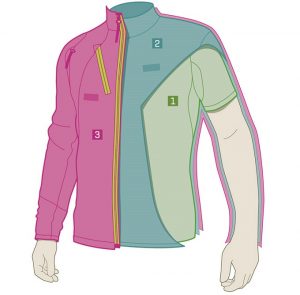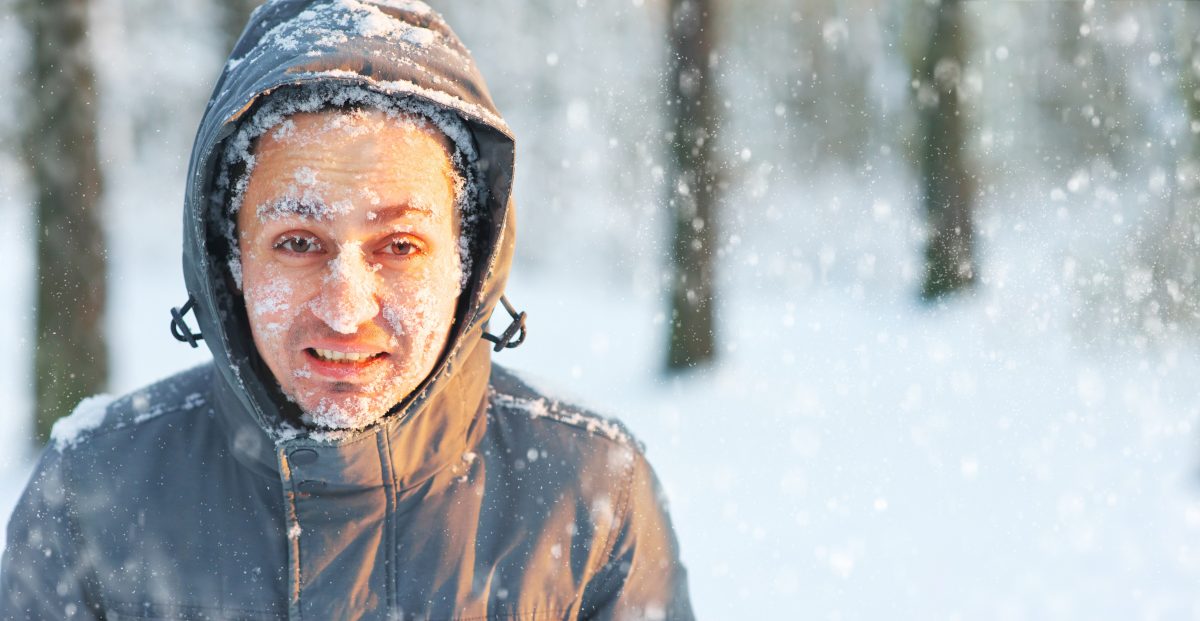Running in winter requires adapting your habits and wearing appropriate clothing. With the right equipment, you can benefit from running and avoid the risk of falling ill. In this article we will give you some advice on clothing suitable for winter temperatures.
Sports and winter clothing
During winter, it is harder to find the motivation to get out and go running in the cold. However, if we want to stick to our training plan and not lose our (hard-earned) form in the previous months, we have to face the low temperatures and do sport in winter too! It is also well known that running in winter is healthy, as low temperatures stimulate the metabolism and the body gets fully active.
In general, it is advisable to choose clothing that is close-fitting to the body, so that the amount of air between the skin and the material is reduced. Recently, the quality of synthetic clothing has increased a lot, and it is possible to combine comfort with a high level of water-repellence: in this way it is possible to wick sweat away from the skin and at the same time maintain thermal comfort.
It is suggested to avoid cotton (it absorbs sweat and cools down quickly). As a general rule, it is better not to overdress to avoid sweating too much.
Here are 6 tips for winter clothing.
The onion principle
Our first and most important tip is to dress like an onion. Depending on how warm it is, we add or remove a layer to our clothing, which should be as technical and light as possible.

The principle of layering states that in order to run in low temperatures we must dress in layers, specifically three:
- First layer: For the first layer of our onion we have to wear clothes directly on the skin, so that we stay dry. What is important is to prevent the sweat from evaporating on the skin, as this will make us cold. The suggestion is therefore to wear functional close-fitting underwear (sweat is transported from the skin to the outside, the body temperature remains constant because heat is retained and the skin stays dry). It should be warm but light, so as not to wet our bodies if we sweat. It makes sense to buy quality, technical clothing made from breathable materials. We recommend an anti-sweat vest, a long-sleeved t-shirt or a t-shirt, a top or sports bra for women.
- Second layer: The second layer is useful for thermoregulation, and has a great influence on performance and well-being. The clothing to be worn in this layer is less tight-fitting but heavier. Their function is to protect us from the cold and the weather (many clothes today are made from innovative water-resistant fabrics, which are useful in light rain). To create this thermal insulation layer, we recommend wearing a thermal running shirt or softshell jacket. Again, it is best not to skimp on quality!
- Third layer: The last layer provides adequate protection against rain, moisture and wind. Here we recommend a hardshell running jacket that can withstand the worst weather. If in the second layer a softshell jacket (elastic, light, comfortable, but not waterproof) is more useful, in this last layer the properties of the hardshell jacket are indispensable. Windproof and waterproof materials are the most suitable (there is no need to take a heavy jacket that would restrict our movements, with the idea of being less cold. It is preferable to opt for a light, technical product with water-repellent material). A jacket with a zip is practical (you can open it to let the heat out while running, but you have to close it to stay warm during breaks). In adverse weather conditions such as heavy rain or snowfall, a jacket with a waterproof Gore-Tex membrane is the best choice.
Extremities (hands, head, feet)
Let’s now look at the other elements of a winter runner’s clothing. The extremities (hands, feet and head) are very sensitive in cold weather, as they are the last areas to get warm! We therefore recommend using winter running gloves (avoid wool gloves, they let in too much air. Touchscreen gloves can be useful to avoid taking them off every time you want to use your smartphone), winter running socks, neck warmers, a cap made of breathable technical fabric to protect your forehead, head and ears (over 30% of heat is lost through your head). If you don’t like running with a cap, you can opt for an ear muff.
Waistcoat
The waistcoat is underestimated, but it is a valuable ally. This cloth provides protection from low temperatures without restricting movement! Keeping your core warm is more important than covering your arms or legs.
Trousers
Compression running trousers (winter leggings) are used by many runners. Close-fitting, comfortable and made of breathable fabric, this type of trouser has several advantages:
- Reduces the risk of injury (through reduced muscle oscillation)
- It can increase the speed of recovery (through greater removal of lactate in the blood and a reduction in swelling)
- Protects from vegetation and, if necessary, sunlight
Shoes
Winter running shoes are an essential piece of equipment. The aspects to bear in mind are waterproofness, protection from cold and moisture but at the same time breathability. A Goretex shoe is an optimal material as it can provide both. We also recommend a trail shoe, because it has excellent grip on the ground. Normal running shoes have a too smooth sole and it can become dangerous to run on slippery surfaces such as ice.
Visibility
Finally, it is important to be clearly visible on the road when running in winter. Often people do their sport when it is already dark, so it is advisable to wear clothes that help signal your presence to motorists on the road. For example, jackets with reflective materials and inserts. Other tricks are to attach small lights to your ankles or use your headlamp. You can also take the opportunity to use bright colours and give your outfit a glamorous touch 😉

